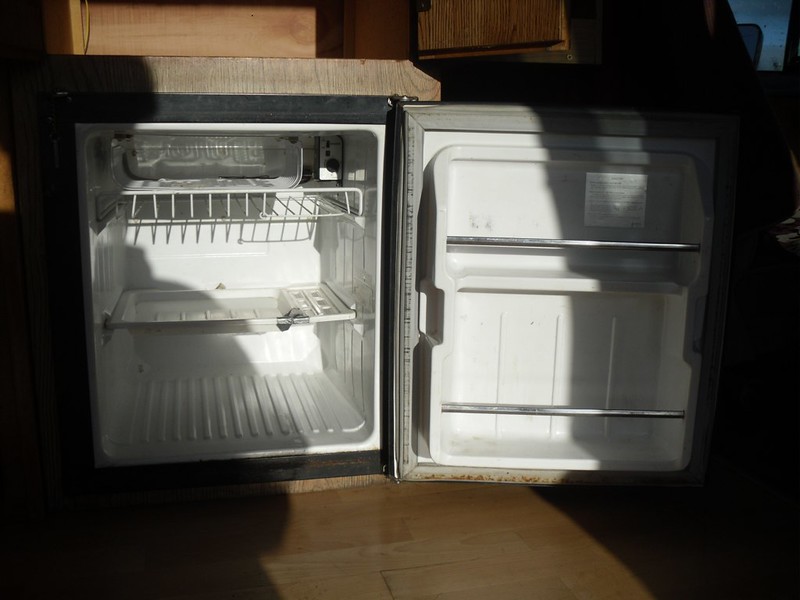Mold is not fun, especially in your fridge near your food. And it can be dangerous if left unchecked and given the right conditions for growth. Mold can be a pain to get rid of, but with some effort and the right products, you’ll be able to get that mold out of your fridge in no time. Here we answer some common questions of how to get rid of mold in your fridge.
What Factors Cause Mold Growth in a Fridge?
Lack of fresh air flow and circulation inside the fridge are ideal for mold growth. Some species that grow on food can produce mycotoxins, harmful poisons that can make people sick. Mold spores have already gotten inside the food fully since it appears moldy. Mycotoxins are most frequently found within and around these spores, although they may also migrate throughout the meal (for more information about food and health one may consult https://extension.umn.edu/)

If you notice an increasing of moldy smells coming from your fridge, this could indicate where there’s excess moisture built up on certain parts of internal. Other factors that contribute to mold growth in a fridge:
- how often the door is opened and closed,
- how much food is stored inside the refrigerator,
- how well insulated your refrigerator is – how dirty or clean it may be internally.what kinds of foods are being stored, such as meats or cheeses which can cause odors if left within the fridge for too long,
What items Do You need to clean a Moldy Fridge?
The list of items necessary for cleaning may include:
- rubber gloves
- warm water and soap
- microfiber washcloths
- a brush
- white vinegar or baking soda
- a bucket or a big bowl
- an old toothbrush or spong
- paper towels

What Steps Should You provide to clean Mold?
Once you’ve identified the problem arised in your refrigerator, here is a step-buy-step guide for how to clean mold out of a fridge.
At this stage, it’s best to leave your refrigerator unplugged for at least 24 hours so that moisture has time to dry out and evaporate. If you can’t do this (or if mold returns), then set the temperature of the refrigerator as low as possible on a regular basis, or keep leftovers in air
- The first step is to check each food for expiration dates and discard anything that has passed its expiration date or is about to do so.
- Start on cleaning thoroughly with warm water and soap any shelves or racks using microfiber cloths.
- Scrub the interior siming for mold removal as well as how to keep mold from coming back. Using a scrub or brush, clean around the seal of your fridge and all draw
- Then use either vinegar (a mild acid) or baking soda (which is alkaline). Pour a few cups of vinegar (or a box ob baking soda) into a bucket or a big bowl. Mix them with warm water and scrub away at the affected area using an old toothbrush, cloth, sponge – basically anything that can reach into all parts of each shelf without causing damage.
- Wipe all surfaces and outer sides of containers with paper towels or dry cloth.
- Re-organize the refrigerator, if you need to adjust shelf placements to create more room, this would be a good time to do it.

Keeep in mind that vinegar break down mold spores over time through exposure to its acidic properties, it’s also important not to leave this mixture on metal surfaces too long. Vinegar has corrosive properties which could cause further rust build up overtime if left untreated, especially for stainless steel refrigerators.
How to prevent Mold in your Fridge?
Everyone knows that preventing a problem is easier than clearing out the consequences. Therefore, in order to avoid mold in your refrigerator, you should follow the simple rules.
- Keep an eye on the types of meals you store in a fridge.
- Keep items in your refrigerator cold enough so that when you open the door, your food will not smell good. If you detect any rotten food, remove it as soon as possible. Cover all of your food with safe containers like glass or metal, or plastic wrap. Mold spores are repelled by covering food; moldy food prevents spores from spreading to other areas of your fridge and house
- Defrost it on a regular basis. To minimize the formation of ice, which melts and creates an environment for mold to grow and multiply in, defrost your fridge on a regular basis. Keep an eye out for leaks and address them as soon as possible.
- Remember that cardboard or paper shouldn’t be kept in your refrigerator, as they will absorb moisture and cause mold to develop. To keep your veggies and fruits fresh for longer, use plastic crates instead of cardboard boxes.
Not so Difficult!
Some people are lucky enough to never have the unpleasant experience of mold in their fridge. For those who do, it can be difficult to get rid of! But with some effort and the right products, you’ll be able to tackle this problem head on without too much fuss. We’ve presented simple but effective tips that should help you deal with your moldy refrigerator situation for good. Let us know how they work out for you by leaving a comment below!
